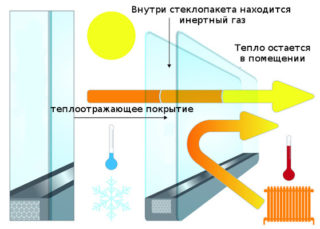Loggia is a technical room that is often used as a storage room. However, it can be made part of the living space. Glazing and finishing of the loggia allows you to enlarge the room, improve its interior. This part of the room can be used for summer vacations, but for this it must be properly equipped.
Selection of glazing systems
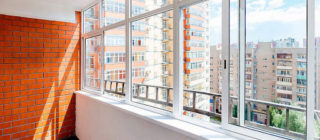
The loggia is a niche in the wall outside the living space. For its glazing, structures of various weight and material are used. There are cold and warm window frames for niche installation.
Cold
Ordinary glass is used to equip the cold glazing. In this case, the air temperature on the loggia will not differ much from the outside one. The method has the following advantages:
- the space is protected from the effects of atmospheric precipitation;
- the design does not make the support heavier, as it is light;
- the cost of such frames is low, and installation is quick and easy.
When using the cold glazing method, you need to understand that in winter you cannot use the loggia for relaxation.
Warm
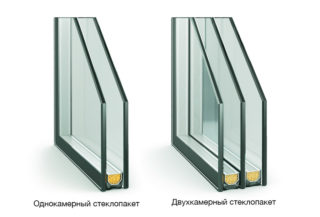
When choosing a warm option for glazing a balcony with your own hands, multi-chamber profiles are used. Double-glazed windows in such structures are energy-saving. Insulation of the loggia throughout the entire area allows you to use it even in winter.
Thermal insulation structures have the following advantages:
- effective protection against external noise;
- maintaining a temperature that is comfortable for a person even in the cold season;
- the ability to execute various ideas of designers;
- providing additional usable space.
Double-glazed windows have a large mass, so the load on the bearing plate is significant. The cost of warm glazing is much higher. Its installation is laborious and time-consuming.
Cladding material selection options
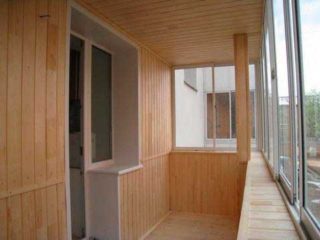
For facing the loggia, various materials are used: wooden or plastic lining, siding, drywall sheets. Each material has its own characteristics.
Wooden lining
The tree is used most often because it is natural and safe. The material is easy to process and subsequent operation, repair. Wooden elements are durable, but they need to be protected from moisture. For this, antiseptic compositions are used.
To reduce the risk of fire, the sheathing is treated with fire retardants. For a greater decorative effect, the wooden lining is varnished, stained or painted.
Plastic panels
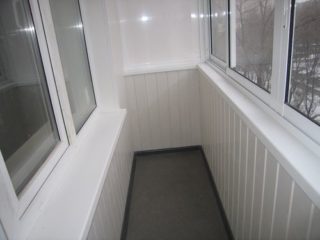
PVC products are used for interior and exterior cladding. They have a good decorative effect, as they can be monochromatic or imitate any other natural material. The advantages of the product include ease of installation and maintenance. However, the plastic panel does not have sufficient strength and does not allow steam to pass through. The cost of plastic cladding is small.
Siding
Siding is most often used for outdoor decoration of a loggia. Its advantage is the variety of colors and sizes.For fastening the elements, a crate is required. The installation procedure does not cause any difficulties, so even a novice master can use such a finish.
Choosing the right glass unit
- Glass. The most commonly used product is 4 mm thick.
- Camera. The degree of thermal insulation of the loggia depends on their number: the more there are, the higher it is.
- Distance frame. The optimum distance between glass panes is 1.6 cm.
- Filling the chambers. Most often, air is used for this purpose. It is possible to improve the thermal insulation properties of the window structure using an inert gas.
You can increase the safety of a double-glazed window if you use a triplex. Even with mechanical damage, it does not crumble into sharp pieces.
Types of finishing the loggia
Installation of windows and finishing of balconies is a responsible process, on which the appearance of the space depends, but also its functionality. The cladding can be internal and external.
Internal
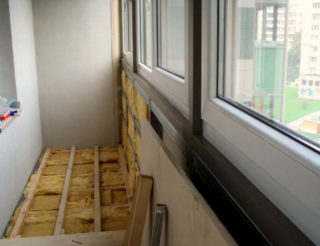
You can glaze the loggia before finishing it or after completing this process. The following materials are suitable for indoor work:
- drywall;
- washable wallpaper;
- tile;
- wooden lining;
- artificial or natural stone;
- painting.
Drywall sheets can be used if the base is made of brick or reinforced concrete. After installing the sheets, they need to be plastered and revetted.
For such a room, it is better to use cork or bamboo wallpaper. They are sold in rolls or plates. Before using such material, the walls must be carefully leveled and prepared.
Thanks to plaster, you can quickly and easily achieve a good decorative effect of the loggia. The material can be purchased immediately ready-made. Due to the presence of various additives, the plaster layer is held firmly and does not lose its technical properties.
Before using wooden lining, all elements are treated with antiseptics, which will protect against the effects of moisture, prevent mold, fungi, and insects from developing.
Outdoor
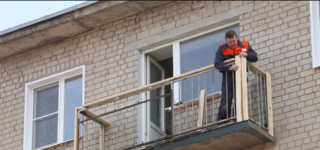
Before glazing the balconies in the Khrushchev with your own hands, it is necessary to carry out the external finishing of the structures. In this case, you can use the following materials:
- Decking. Allows you to use mineral wool as insulation. The cladding is fixed to the parapet using a corner profile or slats.
- Siding. The material is the most common and convenient to use. It can be used even for cold loggias. Siding does not lend itself to moisture, is resistant to the influence of sunlight, and lasts for a long time.
- Wood. Lining is best suited for interior decoration, but can also be used for exterior.
- Plastic lining. The material has a low cost, easy to clean, practical, easy to install. The disadvantage of the product is the low level of strength.
For exterior decoration, MDF panels can be used, since they are environmentally friendly, have an attractive appearance, are acceptable in cost, but absorb moisture.
The best option for finishing the loggia is a sandwich panel. It is made from a variety of materials. There is insulation between the decorative canvas and the base inside the panel.
Calculation of the amount of finishing materials
To calculate the required amount of material, you need to determine the area of the loggia and subtract the windows from it. The surface of the base is divided into rectangles, their area is measured and compared with the dimensions of the finish.
To avoid the lack of cladding, you need to buy it 10% more. The calculation takes into account the direction of fastening of the material. You can also use an online calculator.
Do-it-yourself insulation and glazing features
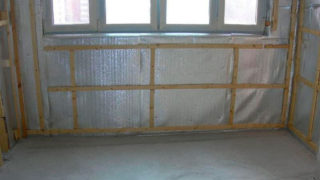
Installation is carried out in accordance with the step-by-step instructions:
- The choice of insulation. To insulate the loggia, foam foam, foam plastic, extruded polystyrene foam, mineral wool, polyurethane foam, expanded clay or aerated concrete are used.
- Preparation of tools and materials.
- The layout of the room.
- Glazing. During installation, make sure that the frame fits snugly against the base.
- Preparation of the base. Before insulation, the rough surfaces of the walls, floor and ceiling must be cleaned of old finishes, irregularities, cracks and other damage must be removed.
- Warming. For installation of the insulator on walls and ceilings, lathing is required.
- Finishing. It is better to start facing work from the ceiling.
Finally, decorative strips or skirting boards are installed, which hide the joints between adjacent surfaces, as well as sockets and switches.
Nuances of work
Before glazing a balcony or loggia, you need to pay attention to several nuances:
- the installation of double-glazed windows will not make the space completely comfortable, additional insulation is required;
- do not give preference to cheap finishing and insulation materials;
- before starting work, it is necessary to draw up a plan for their implementation;
- insulation must be started from the coldest wall of the loggia.
You can install double-glazed windows and insulate non-residential space yourself. Such work takes a lot of time, but will make it possible to make an excellent place for rest, sleep out of the pantry, and increase the living space.

